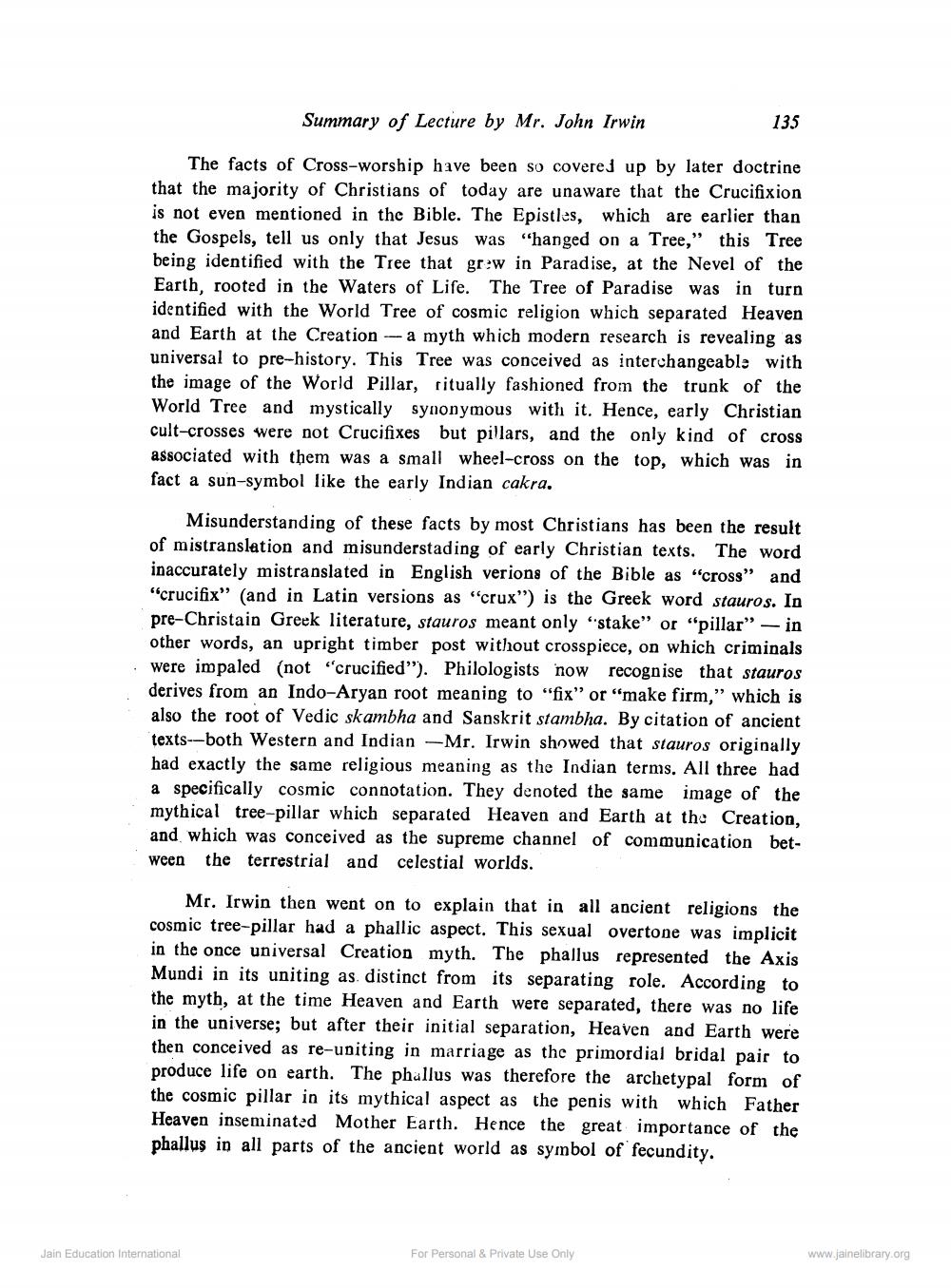________________
Summary of Lecture by Mr. John Irwin
135
The facts of Cross-worship have been so covered up by later doctrine that the majority of Christians of today are unaware that the Crucifixion is not even mentioned in the Bible. The Epistles, which are earlier than the Gospels, tell us only that Jesus was "hanged on a Tree,” this Tree being identified with the Tree that grew in Paradise, at the Nevel of the Earth, rooted in the Waters of Life. The Tree of Paradise was in turn identified with the World Tree of cosmic religion which separated Heaven and Earth at the Creation - a myth which modern research is revealing as universal to pre-history. This Tree was conceived as interchangeable with the image of the World Pillar, ritually fashioned from the trunk of the World Tree and mystically synonymous with it. Hence, early Christian cult-crosses were not Crucifixes but pillars, and the only kind of cross associated with them was a small wheel-cross on the top, which was in fact a sun-symbol like the early Indian cakra.
Misunderstanding of these facts by most Christians has been the result of mistranslation and misunderstading of early Christian texts. The word inaccurately mistranslated in English verions of the Bible as "cross” and "crucifix" (and in Latin versions as "crux") is the Greek word stauros. In pre-Christain Greek literature, stauros meant only "stake" or "pillar" - in other words, an upright timber post without crosspiece, on which criminals were impaled (not "crucified"). Philologists now recognise that stauros derives from an Indo-Aryan root meaning to "fix" or "make firm,” which is also the root of Vedic skambha and Sanskrit stambha. By citation of ancient texts--both Western and Indian --Mr. Irwin showed that stauros originally had exactly the same religious meaning as the Indian terms. All three had a specifically cosmic connotation. They denoted the same image of the mythical tree-pillar which separated Heaven and Earth at the Creation, and which was conceived as the supreme channel of communication between the terrestrial and celestial worlds.
Mr. Irwin then went on to explain that in all ancient religions the cosmic tree-pillar had a phallic aspect. This sexual overtone was implicit in the once universal Creation myth. The phallus represented the Axis Mundi in its uniting as distinct from its separating role. According to the myth, at the time Heaven and Earth were separated, there was no life in the universe; but after their initial separation, Heaven and Earth were then conceived as re-uniting in marriage as the primordial bridal pair to produce life on earth. The phallus was therefore the archetypal form of the cosmic pillar in its mythical aspect as the penis with which Father Heaven inseminated Mother Earth. Hence the great importance of the phallus in all parts of the ancient world as symbol of fecundity.
For Personal & Private Use Only
Jain Education International
www.jainelibrary.org




